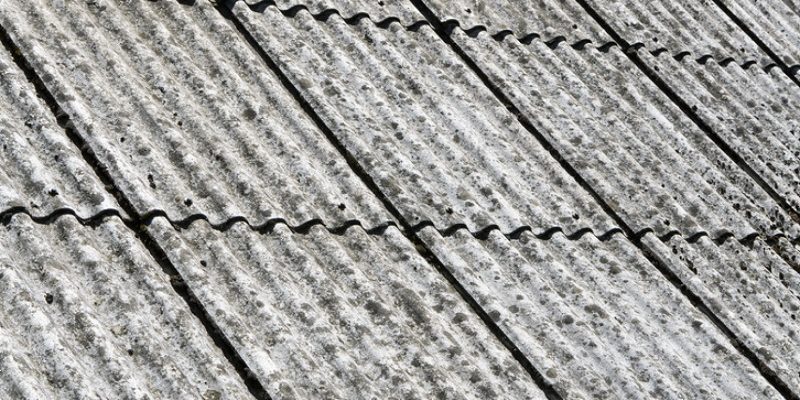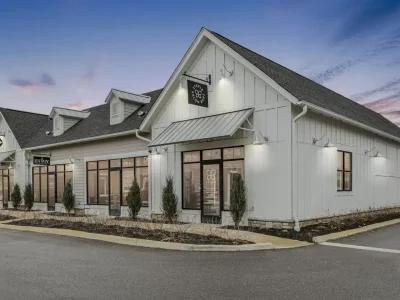Understanding Asbestos and Its Dangers
Asbestos, once widely used in construction and manufacturing, poses significant health risks when disturbed. Its microscopic fibers can cause severe respiratory issues and cancer when inhaled.
What Is Asbestos?
Asbestos is a group of naturally occurring fibrous minerals known for their heat resistance and insulating properties. Six types of asbestos exist: chrysotile, amosite, crocidolite, tremolite, anthophyllite, and actinolite. Chrysotile, or white asbestos, was the most commonly used in building materials, insulation, and automotive parts. These fibers are extremely durable and resistant to fire, heat, and chemical reactions, making them ideal for various industrial applications.
Health Risks Associated with Asbestos Exposure
Exposure to asbestos fibers can lead to severe health complications, often developing decades after initial contact. Common asbestos-related diseases include:
- Asbestosis: Scarring of lung tissue, causing breathing difficulties
- Lung cancer: Malignant tumor growth in the lungs
- Mesothelioma: Cancer affecting the lining of the lungs, chest, or abdomen
- Pleural plaques: Thickening of the lung lining, potentially leading to breathing issues
| Disease | Latency Period | Mortality Rate |
| Asbestosis | 10-40 years | 7% within 20 years |
| Lung Cancer | 15-35 years | 14% survival rate at 5 years |
| Mesothelioma | 20-50 years | 12% survival rate at 5 years |
The risk of developing these conditions increases with prolonged or intense exposure to asbestos fibers. Even short-term exposure can potentially lead to health issues. Veterans who worked in shipyards, construction, or maintenance roles during their service are at higher risk due to the widespread use of asbestos in military applications.
Military Veterans and Asbestos Exposure
Military veterans face a heightened risk of asbestos exposure due to its widespread use in military installations and equipment. This section explores the common sources of asbestos during military service and the long-term health consequences for veterans.
Common Sources of Asbestos in Military Service
Asbestos was extensively used in military applications due to its fire-resistant properties. Common sources include:
- Naval vessels: Insulation, pipes, boilers, and engine rooms
- Aircraft: Brake pads, gaskets, and insulation
- Military vehicles: Brake linings, clutch plates, and gaskets
- Barracks and buildings: Roofing, flooring, and insulation materials
- Protective gear: Helmets, gloves, and fire-resistant clothing
Veterans who served in construction, maintenance, or repair roles had an increased likelihood of asbestos exposure. Shipyard workers, mechanics, and electricians were particularly at risk due to their frequent contact with asbestos-containing materials.
Long-Term Health Consequences for Veterans
Asbestos exposure can lead to severe health issues that may not manifest for decades:
- Asbestosis: Scarring of lung tissue, causing breathing difficulties
- Lung cancer: Higher risk for veterans who were also smokers
- Mesothelioma: Rare and aggressive cancer affecting the lining of the lungs, chest, or abdomen
- Pleural plaques: Thickening of the lung lining, which may indicate future health problems
Veterans exposed to asbestos during their service have an elevated risk of developing these conditions compared to the general population. The latency period for asbestos-related diseases ranges from 10 to 50 years, making regular health check-ups crucial for early detection and treatment.
Identifying Asbestos in Your Home
Recognizing asbestos in residential structures is crucial for veterans and homeowners. Asbestos identification involves understanding common locations and recognizing potential signs of its presence.
Common Locations of Asbestos in Older Houses
Asbestos lurks in various areas of older homes, particularly those built before the 1980s. Common locations include:
- Insulation: Attic and wall insulation often contain asbestos fibers
- Flooring: Vinyl tiles, sheet flooring, and adhesives may incorporate asbestos
- Roofing: Shingles and felt underlayment frequently used asbestos for durability
- Pipes: Insulation wrapping on pipes, especially in basements and crawl spaces
- Textured ceilings: “Popcorn” ceilings often contain asbestos for fire resistance
- HVAC systems: Ductwork, furnaces, and boilers may have asbestos components
- Siding: Exterior cement siding sometimes includes asbestos fibers
- Construction date: Homes built before 1980 have a higher likelihood of containing ACMs
- Fibrous appearance: Materials with a fibrous or fuzzy texture when damaged
- Discoloration: Yellowing or discoloration of insulation or ceiling tiles
- Labels: Some products may have labels indicating asbestos content
- Layered flooring: Multiple layers of flooring, especially in older homes
- Corrugated cement roofing: Often contains asbestos fibers
- Pipe insulation: Chalky white or gray insulation around pipes
- Fireproofing materials: Sprayed-on fireproofing in older buildings
Steps to Take if You Suspect Asbestos in Your Home
If you suspect asbestos in your home, it’s crucial to take immediate action to protect your health and safety. Follow these steps to address potential asbestos hazards effectively.
Professional Asbestos Inspection
A professional asbestos inspection is the first critical step in addressing suspected asbestos. Certified asbestos inspectors use specialized equipment to collect samples safely and accurately. These samples undergo laboratory analysis to determine the presence and type of asbestos. Inspectors also assess the condition of asbestos-containing materials, identifying areas that may pose immediate risks. Professional inspections provide detailed reports, including recommendations for asbestos management or removal based on the specific findings in your home.
Safe Asbestos Removal and Abatement
Safe asbestos removal and abatement require specialized skills and equipment. Licensed asbestos abatement contractors follow strict protocols to minimize fiber release during removal. They use containment barriers, negative air pressure systems, and HEPA filtration to prevent asbestos fibers from spreading. Workers wear personal protective equipment, including respirators and disposable coveralls. After removal, the area undergoes thorough cleaning and air testing to ensure safe re-occupancy. Proper disposal of asbestos-containing materials in designated landfills completes the abatement process. Homeowners should never attempt DIY asbestos removal due to the significant health risks involved.
Legal Rights and Compensation for Veterans
Veterans exposed to asbestos during their military service have legal rights and options for compensation. These include benefits from the Department of Veterans Affairs (VA) and the ability to pursue legal action against asbestos manufacturers.
VA Benefits for Asbestos-Related Illnesses
The VA offers disability compensation for veterans with asbestos-related diseases linked to their military service. Eligible conditions include asbestosis, mesothelioma, and lung cancer. Veterans must provide evidence of asbestos exposure during service and a current diagnosis. The VA assigns disability ratings based on the severity of the condition, determining the amount of monthly compensation. Additional benefits include healthcare, vocational rehabilitation, and dependency and indemnity compensation for surviving spouses and dependent children.
Legal Options for Asbestos Exposure Claims
Veterans can file lawsuits against asbestos manufacturers and companies that supplied asbestos-containing products to the military. These legal actions are separate from VA claims and don’t affect VA benefits. Asbestos trust funds, established by bankrupt asbestos companies, provide another avenue for compensation. Veterans typically work with specialized attorneys who handle asbestos litigation. These lawyers operate on a contingency fee basis, meaning they only get paid if the veteran receives compensation. Successful claims can result in settlements or jury awards covering medical expenses, lost wages, and pain and suffering.
Protecting Yourself and Your Family
Safeguarding against asbestos exposure in the home requires a proactive approach. Veterans and their families can take specific steps to minimize risks and maintain a safe living environment.
Safety Measures for Living with Asbestos
Homeowners with confirmed asbestos-containing materials should:
- Leave undamaged asbestos-containing materials undisturbed
- Seal off areas with exposed asbestos fibers
- Use plastic sheeting and duct tape to cover damaged areas
- Avoid activities that may disturb asbestos, such as drilling or sanding
- Hire certified professionals for any repairs or renovations involving asbestos materials
- Implement a no-shoes policy indoors to prevent tracking in asbestos fibers
- Use HEPA air purifiers to capture airborne asbestos fibers
- Educate family members about asbestos locations and safe practices
- Conduct visual inspections of known asbestos-containing materials monthly
- Document the condition of asbestos materials with photos and written records
- Schedule professional asbestos inspections annually
- Promptly address any changes in the condition of asbestos materials
- Maintain proper humidity levels to prevent material degradation
- Clean surfaces with damp cloths or HEPA-filtered vacuums to minimize fiber release
- Keep detailed records of all asbestos-related activities and inspections
- Stay informed about local regulations and guidelines for asbestos management
Military veterans face unique health risks from asbestos exposure during their service and potentially in their homes. Awareness and proactive measures are crucial for managing these risks. Veterans should prioritize regular health check-ups and be vigilant about potential asbestos in their living spaces. If suspected, professional inspection and abatement are essential. Veterans also have legal rights and compensation options available for asbestos-related illnesses. By staying informed and taking appropriate action, veterans can protect their health and well-being in the long term.








Comments